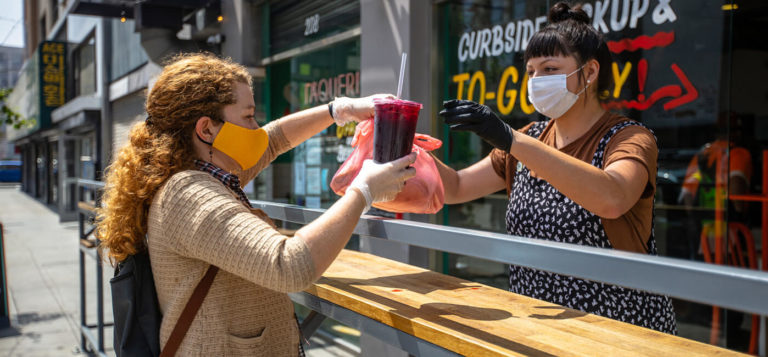GroundTruth’s VP and Head of Retail & Restaurant, Alicia DiStefano, recently spoke with Footwear News about the value of brick-and-mortar and her tips on how retailers can accelerate sales. To see the full Q&A, read below:
1. What solutions does GroundTruth offer to footwear brands and retailers?
Specifically, a footwear brand or retailer might partner with my team to gain a deeper understanding of their target audience based on their real-world behaviors. Using GroundTruth’s data, we’re able to build different audiences based on a mobile device’s location footprint. For example, we may build audiences, such as Fashion Influencers, Luxury Shoppers, or Bargain Hunters, and layer that with a brand’s target demographic. We can then reach these audiences through precise location-based mobile advertising to influence these mobile shoppers in real-time and drive them in-store.
2. What are the biggest trends in performance marketing lately?
When it comes to retailers, performance marketing boils down to three goals: driving new visits, increasing frequency of visits, and tying visits back to sales. Working with hundreds of retail brands across different verticals, I can’t stress enough the value of being able to transact on performance in a digital world and pay for in-store visits. Through GroundTruth’s foot traffic data and insights, marketers are able to bridge the online to offline gap and convert online leads in-store. This allows my clients to focus on investing their dollars into the customer experience around a visit, improving overall marketing ROI.
3. What is the biggest things footwear brands and retailers tend to overlook, marketing-wise? How can they go about changing that?
It seems like all we hear about these days is the ‘Retail Apocalypse.’ But if you look at the facts, the majority of shopping remains in-store. The U.S. Census Bureau reports that 90% of all commerce still happens offline. And while there’s value in investing in e-commerce, footwear brands and retailers can’t overlook the value of brick-and-mortar. I think this point is further validated when we see brands like Amazon, Warby Parker, and Bonobos, all born in the online world, investing in their physical footprint. This past year, we saw Amazon acquire Whole Foods and watched companies like Everlane, who sell footwear, launch their first brick-and-mortar location after years of swearing they wouldn’t.
Another issue is that there’s a lot of clutter in our space. There are so many different marketing solutions and vendors out there, that I constantly see brands and retailers not knowing which ones to turn to. That’s why I always recommend my clients invest, first and foremost, in a true performance-driven pricing model, whether that be using advertising impressions to drive offline visits or online orders.
4. When it comes to footwear, specifically, how is performance marketing unique?
Footwear doesn’t follow the same trends we’re seeing in traditional retail. People still want to go in-store and try on shoes. I think size and comfort play an important role here too. People aren’t as comfortable buying shoes online, they want to feel it, try it on and frankly…see if the shoe fits! This just puts even greater importance on the value of an in-store visit.
5. The marketplace is so saturated with products, and online shopping has made retail extremely competitive. What is your #1 top tip as to how footwear brands and retailers can stand out, marketing-wise?
My number one tip to footwear brands and retailers is understanding and knowing your customers, and not making assumptions about them just based on their digital behaviors. I always like to use the example of myself here. I’m a huge sports fan. I consume content on ESPN’s channels and frequently visit the NFL store, which might put me into a male demographic if you’re just looking at my digital behaviors. But this in no way represents who I am in the real world. I visit nail salons frequently, I’m a loyal Bloomingdale’s shopper, and I’m an avid business traveler—department store enthusiast, woman on-the-go, or business traveler also represents who I am.
Once you know who your customer is based on both online and offline data, you also need to make sure you understand what motivates your customer. Is it price, comfort, or luxury, etc.? Whatever it is, make sure to position your brand accordingly to them. Retailers need to keep their consumers intrigued and leverage data to understand them, stay relevant to them, and serve individualized messages to them.





